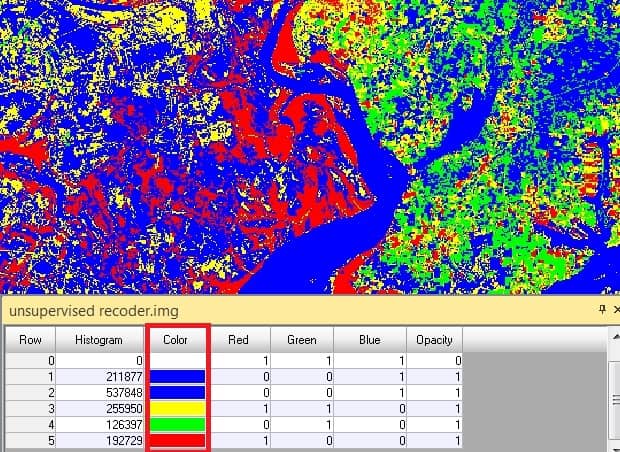Unsupervised Classification in Erdas Imagine
Unsupervised Classification is called clustering because it is based on the natural groupings of pixels in image data when they are plotted in feature space.
Table of Contents
Unsupervised Training
The Unsupervised training is more computer-automated. You can specify some parameters that the computer uses to uncover statistical patterns that are inherent in the data. These patterns do not necessarily correspond to directly meaningful characteristics of the scene, such as contiguous, easily recognized areas of a particular soil type or land use.
They are simply clusters of pixels with similar spectral characteristics. In some cases, it may be more important to identify groups of pixels with similar spectral characteristics than it is to sort pixels into recognizable categories.
Perform Unsupervised Classification in Erdas Imagine in using the ISODATA algorithm. The ISODATA clustering method uses the minimum spectral distance formula to form clusters.
- The maximum number of iterations has been performed, or
- A Maximum percentage of unchanged pixels has reached between two iterations.
Unsupervised Classification Tutorial
Performing Unsupervised Classification is simpler than a Supervised Classification, because the signatures are automatically generated by the ISODATA algorithm.
In this Tutorial, perform Unsupervised Classification using Erdas Imagine software.
Click Raster tab > Classification group > expend Unsupervised > select Unsupervised Classification.
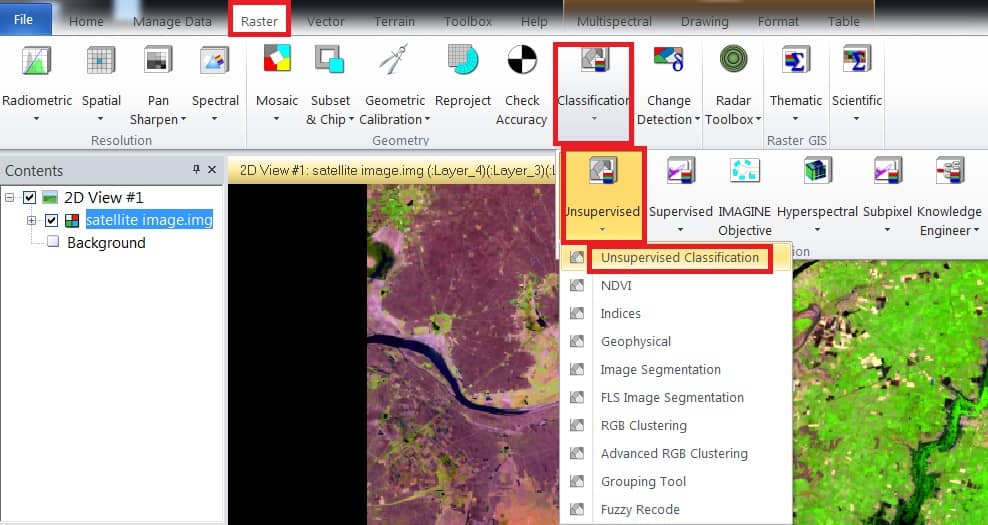
The Unsupervised Classification dialog open Input Raster File, enters the continuous raster image you want to use (satellite image.img).
Check Output Cluster Layer, and enter a name for the output file in the directory of your choice.
Under Clustering, Options turned on Initialize from Statistics option. Select the K-means Clustering algorithm method and enter the number of class 10.
Click the Color Scheme Options button, check Grayscale, and close the window.

In the Processing Options, Maximum Iterations number field, enter the maximum number(24) of iterations you want. (This value is the maximum number of times that the ISODATA utility re-clusters the data).
Setting the Convergence Threshold between 0.95-0.98.
Click OK in the Unsupervised Classification dialog to start the classification process.
Now open Unsupervised Classification Thematic Output Image.
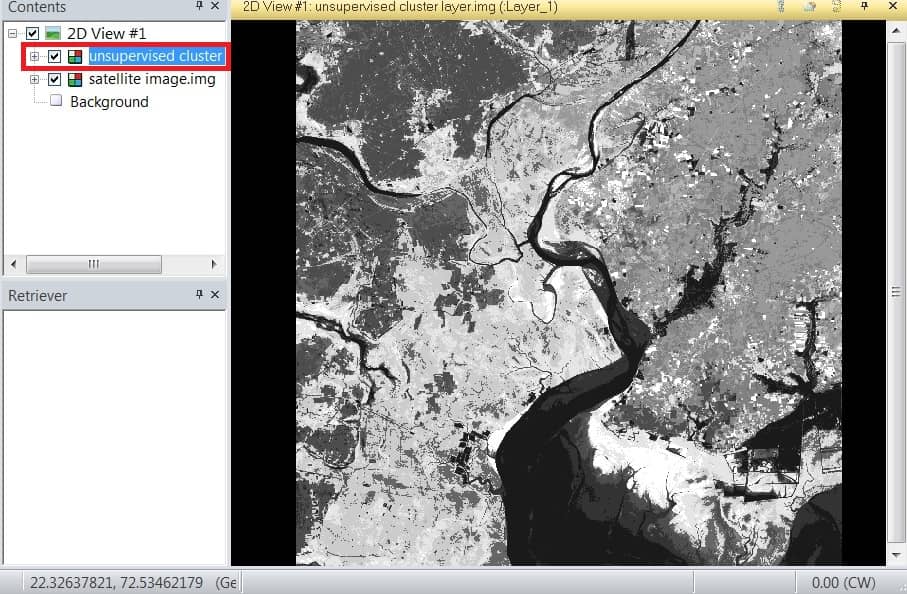
Open also Attribute Table. Click Table tab > expand Show Attribute > Show Attribute.
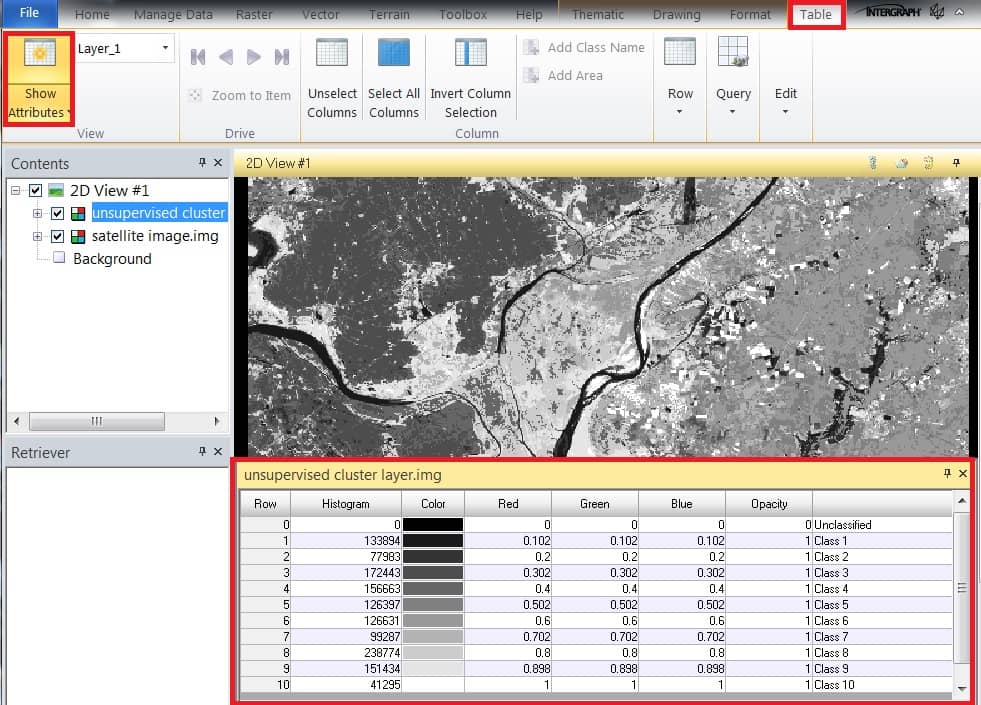
Before analyzing the classes, Individually needs to set the Opacity for all the Classes to Zero.
In the Raster Attribute Table, click the Opacity column, right-click, and select Formula. The Formula dialog opens, click 0 on the number pad, then click Apply. Close the Formula window.

In the Raster Attribute Table, select the first row. Click on the Color patch under the color column for class 1 in the cell array and change the color to Yellow. (you also choose any type of color). Change the class name as well.
Apply the same process to all the classes.
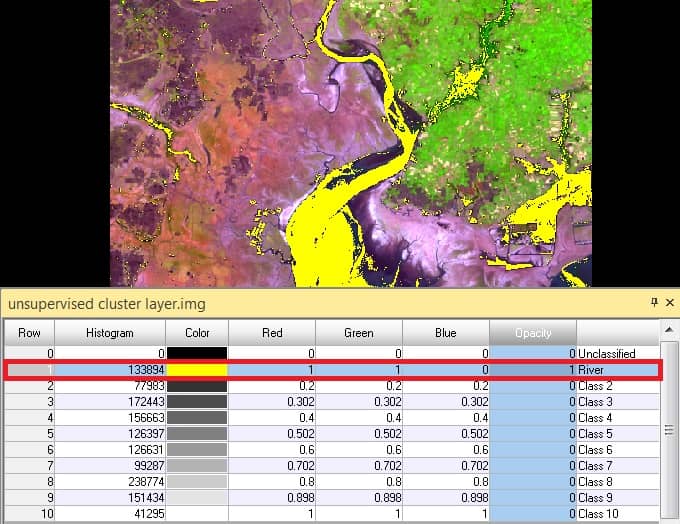
Complete to identify all the classes, choose color and class names.

Recoding
This function allows assigning a new class value. Also, be used to combine classes by recoding more than one class to the same new class number.
Click Raster tab > Thematic button > Recode.

The Recode dialog opens, select the Input file and also the Output file.
Click Setup Recode, Thematic Recode window appears to select rows as the same class and marge the classes.
The output values of the recode display in the New Value column.
Click the OK button in the Thematic Recode window, then click the OK on the Recode window.
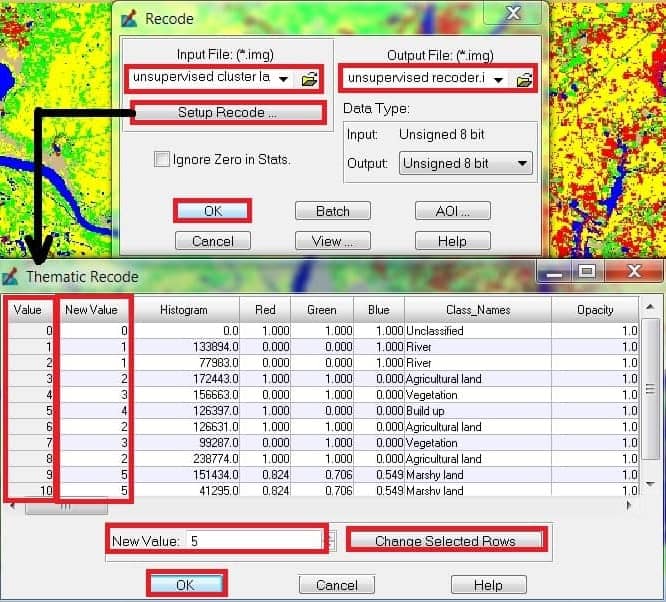
Now open the Recode file, and also open Attributes Table. Set up color as you choose and write the class or Feature name.
